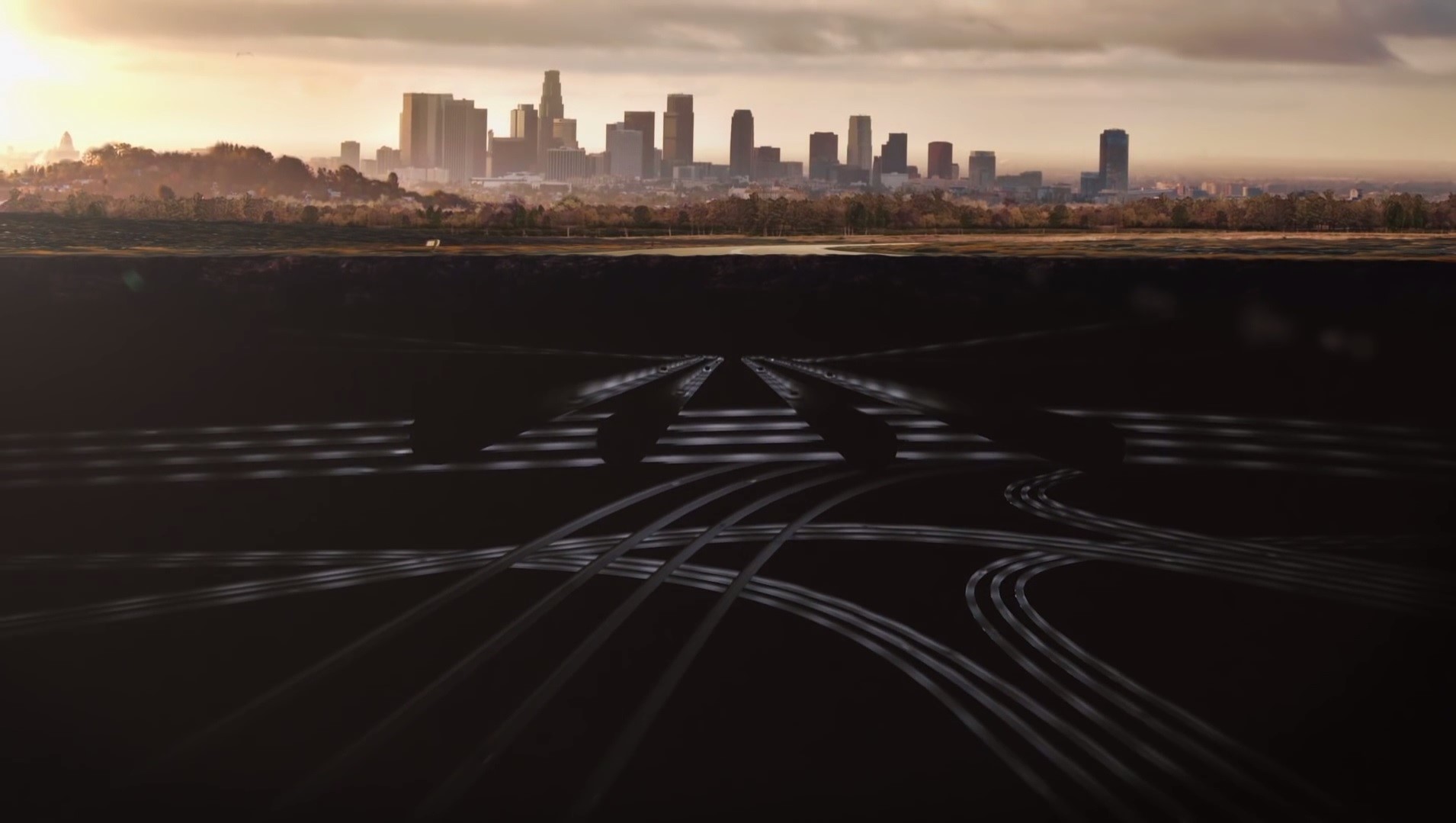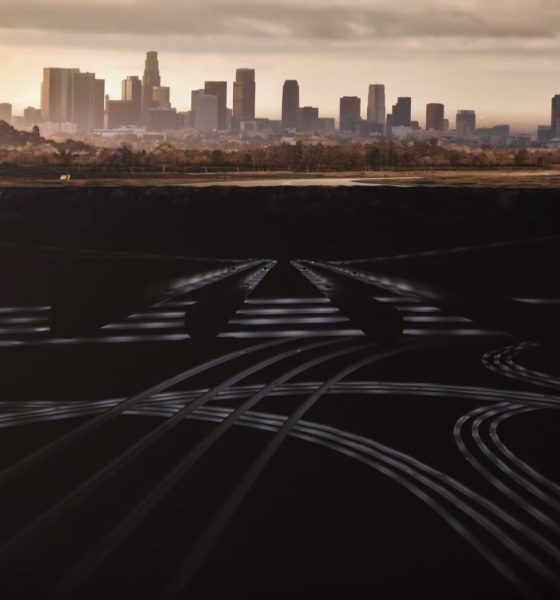

News
The Boring Company confirms that it will develop its own Hyperloop tech
Following closely on the heels of rumors that Elon Musk was pursuing development of his own Hyperloop technology, a spokesperson for the Musk-backed The Boring Company has confirmed plans to build a 600+mph high speed transportation system “aka Hyperloop”. In a statement to Wired, the spokesperson revealed that The Boring Company was indeed exploring the development of tunnels and related infrastructure that would allow for two different types of transport.
“At the Boring Company, we plan to build low-cost, fast-to-dig tunnels that will house new high-speed transportation systems. Most will be standard pressurized tunnels with electric skates going 125+ mph. For long-distance routes in straight lines, such as NY to DC, it will make sense to use pressurized pods in a depressurized tunnel to allow speeds up to approximately 600+ mph (aka Hyperloop).”
Musk has previously provided a video demonstrating the electric skate concept. The above statement indicates that the skate-focused tunnels will be solely for shorter distance traffic alleviation, while longer distance routes will forgo the 125 mph skate for a 600+ mph Hyperloop.
This marks the first time that The Boring Company has officially confirmed that it has plans to develop its own Hyperloop technology, and follows many rumors and Musk himself stating that the company had received “verbal approval” for a Hyperloop between New York City and Washington D.C in July.
https://www.youtube.com/watch?v=u5V_VzRrSBI
News of Musk’s interest in developing his own Hyperloop has created a considerable amount of drama and apparently took the private companies now developing their own derivatives of Hyperloop by surprise. Musk and SpaceX have consistently supported and encouraged external companies and entities to further develop the concept, and now Musk has decided that he will pursue the development of Hyperloop himself, something that he deemed a distinct possibility approximately a handful of days after he published the white paper in 2013.
Regardless, with Musk’s precedent for intense focus and dedication in the face of armies of armchair critics, as well as The Boring Company’s utilization of SpaceX and potentially Tesla expertise, the future is looking bright for both traffic alleviation with tunnels and high speed intercity travel by Hyperloop. With the company’s hat now officially in the ring, competition is guaranteed to be stronger than ever between the several companies pursuing the technology.
Meanwhile, The Boring Company is forging ahead in Hawthorne and just recently held a meeting with the City Council in order to present plans for a several mile R&D tunnel under the city. Tunneling requires extensive evidence of care being taken to avoid disrupting numerous pipes, wires, and other underground utilities, and TBC will have to demonstrate their ability to safely tunnel under the city. The company has already received preliminary approval from Hawthorne.

News
Tesla FSD fleet is nearing 7 billion total miles, including 2.5 billion city miles
As can be seen on Tesla’s official FSD webpage, vehicles equipped with the system have now navigated over 6.99 billion miles.

Tesla’s Full Self-Driving (Supervised) fleet is closing in on almost 7 billion total miles driven, as per data posted by the company on its official FSD webpage.
These figures hint at the massive scale of data fueling Tesla’s rapid FSD improvements, which have been quite notable as of late.
FSD mileage milestones
As can be seen on Tesla’s official FSD webpage, vehicles equipped with the system have now navigated over 6.99 billion miles. Tesla owner and avid FSD tester Whole Mars Catalog also shared a screenshot indicating that from the nearly 7 billion miles traveled by the FSD fleet, more than 2.5 billion miles were driven inside cities.
City miles are particularly valuable for complex urban scenarios like unprotected turns, pedestrian interactions, and traffic lights. This is also the difference-maker for FSD, as only complex solutions, such as Waymo’s self-driving taxis, operate similarly on inner-city streets. And even then, incidents such as the San Francisco blackouts have proven challenging for sensor-rich vehicles like Waymos.
Tesla’s data edge
Tesla has a number of advantages in the autonomous vehicle sector, one of which is the size of its fleet and the number of vehicles training FSD on real-world roads. Tesla’s nearly 7 billion FSD miles then allow the company to roll out updates that make its vehicles behave like they are being driven by experienced drivers, even if they are operating on their own.
So notable are Tesla’s improvements to FSD that NVIDIA Director of Robotics Jim Fan, after experiencing FSD v14, noted that the system is the first AI that passes what he described as a “Physical Turing Test.”
“Despite knowing exactly how robot learning works, I still find it magical watching the steering wheel turn by itself. First it feels surreal, next it becomes routine. Then, like the smartphone, taking it away actively hurts. This is how humanity gets rewired and glued to god-like technologies,” Fan wrote in a post on X.
News
Tesla starts showing how FSD will change lives in Europe
Local officials tested the system on narrow country roads and were impressed by FSD’s smooth, human-like driving, with some calling the service a game-changer for everyday life in areas that are far from urban centers.

Tesla has launched Europe’s first public shuttle service using Full Self-Driving (Supervised) in the rural Eifelkreis Bitburg-Prüm region of Germany, demonstrating how the technology can restore independence and mobility for people who struggle with limited transport options.
Local officials tested the system on narrow country roads and were impressed by FSD’s smooth, human-like driving, with some calling the service a game-changer for everyday life in areas that are far from urban centers.
Officials see real impact on rural residents
Arzfeld Mayor Johannes Kuhl and District Administrator Andreas Kruppert personally tested the Tesla shuttle service. This allowed them to see just how well FSD navigated winding lanes and rural roads confidently. Kruppert said, “Autonomous driving sounds like science fiction to many, but we simply see here that it works totally well in rural regions too.” Kuhl, for his part, also noted that FSD “feels like a very experienced driver.”
The pilot complements the area’s “Citizen Bus” program, which provides on-demand rides for elderly residents who can no longer drive themselves. Tesla Europe shared a video of a demonstration of the service, highlighting how FSD gives people their freedom back, even in places where public transport is not as prevalent.
What the Ministry for Economic Affairs and Transport says
Rhineland-Palatinate’s Minister Daniela Schmitt supported the project, praising the collaboration that made this “first of its kind in Europe” possible. As per the ministry, the rural rollout for the service shows FSD’s potential beyond major cities, and it delivers tangible benefits like grocery runs, doctor visits, and social connections for isolated residents.
“Reliable and flexible mobility is especially vital in rural areas. With the launch of a shuttle service using self-driving vehicles (FSD supervised) by Tesla in the Eifelkreis Bitburg-Prüm, an innovative pilot project is now getting underway that complements local community bus services. It is the first project of its kind in Europe.
“The result is a real gain for rural mobility: greater accessibility, more flexibility and tangible benefits for everyday life. A strong signal for innovation, cooperation and future-oriented mobility beyond urban centers,” the ministry wrote in a LinkedIn post.
News
Tesla China quietly posts Robotaxi-related job listing
Tesla China is currently seeking a Low Voltage Electrical Engineer to work on circuit board design for the company’s autonomous vehicles.

Tesla has posted a new job listing in Shanghai explicitly tied to its Robotaxi program, fueling speculation that the company is preparing to launch its dedicated autonomous ride-hailing service in China.
As noted in the listing, Tesla China is currently seeking a Low Voltage Electrical Engineer to work on circuit board design for the company’s autonomous vehicles.
Robotaxi-specific role
The listing, which was shared on social media platform X by industry watcher @tslaming, suggested that Tesla China is looking to fill the role urgently. The job listing itself specifically mentions that the person hired for the role will be working on the Low Voltage Hardware team, which would design the circuit boards that would serve as the nervous system of the Robotaxi.
Key tasks for the role, as indicated in the job listing, include collaboration with PCB layout, firmware, mechanical, program management, and validation teams, among other responsibilities. The role is based in Shanghai.
China Robotaxi launch
China represents a massive potential market for robotaxis, with its dense urban centers and supportive policies in select cities. Tesla has limited permission to roll out FSD in the country, though despite this, its vehicles have been hailed as among the best in the market when it comes to autonomous features. So far, at least, it appears that China supports Tesla’s FSD and Robotaxi rollout.
This was hinted at in November, when Tesla brought the Cybercab to the 8th China International Import Expo (CIIE) in Shanghai, marking the first time that the autonomous two-seater was brought to the Asia-Pacific region. The vehicle, despite not having a release date in China, received a significant amount of interest among the event’s attendees.








